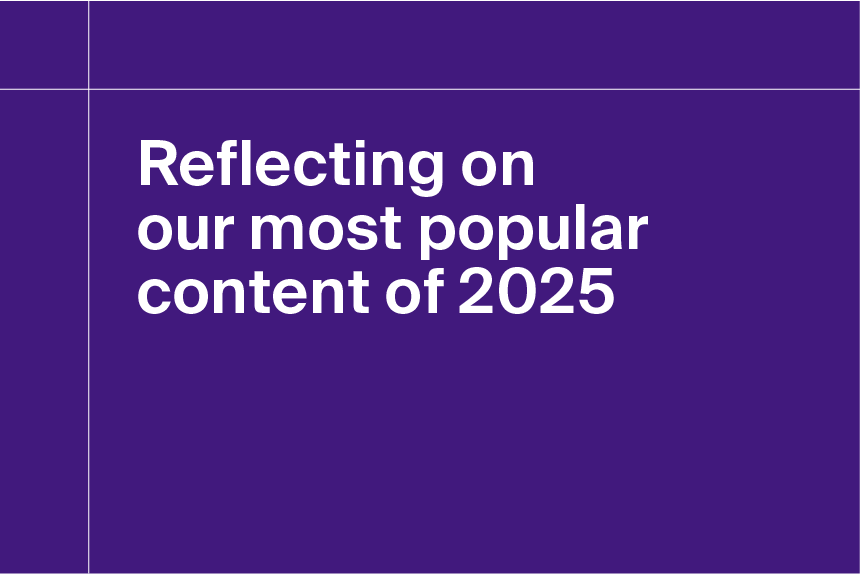This is the final part of our blog series covering the provider staffing shortage.
In part one, we started our journey with a discussion on how a growing, aging population of patients and healthcare providers can lead to serious problems over the next decade. In part two, we dug into the underlying causes of physician burnout and why healthcare workers are seeking less stressful jobs or opting for early retirement. for early retirement.
With an anticipated shortage of between 37,800 and 124,000 physicians by 2032, it’s imperative that we change the current trajectory. Thankfully, there are some strategies already being explored. Four of them are:
- Expand education for physicians and med students
- Raise the limits on Medicare-supported residency programs
- Confront provider burnout
- Use telehealth to keep up with demand
1.Expand education for physicians and med students
An aging population of patients and providers means that over the next ten years:
- There will potentially be fewer active physicians as the majority reach retirement age.
- The physicians who remain will be more specialized in care to treat the significant population of older adults, leaving fewer providers for other conditions.
Because medical school and physician training can take a decade or longer, a provider shortage in 2032 is a problem that needs to be addressed now.
And while there might not be any concrete ways to fast-track the process to become a doctor, medical schools can work to manage the staffing shortage by increasing enrollment and acceptance of first-year students.
According to the Association of American Medical Colleges (AAMC), progress on this front has slowly been made since 2002, as medical schools have increased their enrollments by 35%. Despite this improvement, acceptance rates remain drastically low. For example, selective schools like Harvard accepted only 3.3% of applications in 2021. The average medical school in the U.S. stands with only a 7% acceptance rate.
2. Raise the limits on Medicare-supported residency programs
Simply expanding first-year class sizes won’t be enough. Once a med student graduates, they must undergo further training to be licensed to practice independently. The majority of these programs are funded through the HHS and are called Graduate Medical Education (GME).
These programs are essential to the development of a physician’s knowledge and their ability to provide care. GME training allows physicians to not only stay up to date on the latest medical developments but contribute to them with their own cutting-edge medical research.
Most importantly, the existence of GME positions helps ensure the future medicine is in capable hands, as many of these positions serve at teaching hospitals and in rural areas that have historically been underserved. As the AAMC notes, increasing funding to GME programs and the number of positions available can play a critical role in combating the physician staffing shortage in the future.
At the moment, the number of GME positions is capped by Medicare. But there may be a shift underway. In 2021, the Consolidated Appropriations Act was passed, which will provide 1,000 new Medicare-supported GME positions.
To follow it, the Shortage Reduction Act of 2021 was presented to Congress. Though it has yet to pass the Senate, the bill proposes raising the number of GME positions by 2,000 per year for seven years and would specifically target hospitals in rural areas and other designated locations.
3. Confront provider burnout
Physicians and other healthcare workers dedicate their careers to keeping people healthy, but too often they don’t receive the care that they need to address their own health and wellbeing.
Whether it’s managing the stress of COVID-19, working long hours, or being paid an insufficient salary, physicians are feeling the pressure of burnout from multiple angles.
Physician burnout is a serious and systemic issue that has long plagued healthcare providers. The strain of the pandemic, however, along with the stigma surrounding mental health, have created barriers that are preventing physicians from receiving the care they need.
Fortunately, legislation has already been passed to address the symptoms of physician burnout. The Dr. Lorna Breen Health Care Provider Protection Act empowers hospitals and other organizations to promote mental and behavioral health through education, training and other activities.
But that’s not all that can be done. Healthcare providers can actively support physicians taking charge over their feelings of burnout by:
- Introducing technology that can automate administrative processes like scheduling, data collection, note-taking and feedback requests.
- Fostering a positive work environment. Medscape respondents say that a lack of respect from patients, staff, colleagues and employers is a major contributor to burnout.
- Creating peer-to-peer support groups to eliminate the stigma around mental health and accelerate recovery from burnout.
4.Telehealth can help providers keep up with demand
As the number of older adults with at least one chronic condition rises over the next decade, overall patient outcomes could suffer as demand shifts to accommodate this influx.
Expanding telehealth services could allow healthcare organizations to balance the time of their workers more effectively with the resources on-hand.
Telehealth can help healthcare organizations manage the strain of the staffing shortage by:
- Streamlining administrative tasks
- Using telehealth to “phone a friend”
- Reducing the need for in-person healthcare services
Telehealth can streamline administrative tasks
In a 2021 poll by Medscape, physicians declared that too many administrative tasks like handling paperwork or entering data were the primary contributor to feelings of burnout.
In a similar way to how telehealth is helping hospitals treat COVID-19 patients, telehealth can simplify a physician’s daily routine, so they can spend less time on administrative duties and more time caring for patients. Telehealth and remote patient monitoring tools can help providers easily collect and organize patient data, slashing the time spent entering information or generating reports.
Providers can use telehealth to “phone a friend”
In a recent webinar with Covenant Health, we took a closer look at exactly how telehealth is being used to provide healthcare workers with additional expertise and resources that might otherwise not have been previously accessible due to staffing shortages.
Dr. Amanda Grubb Halford, SVP and Chief Medical Informatics Officer at Covenant Health, describes telehealth as allowing providers to “phone a friend.”
Halford describes an example where a nurse is managing a patient with a complex condition and lacks the resources or experience necessary to treat them. In this case, the nurse can use their hospital’s telehealth system to call in a more senior nurse or specialist to offer guidance on treating the patient. As more facilities embrace the Internet of Medical Things, the easier it will become for care teams to loop-in outside expertise and reinforce their numbers.
Telehealth can reduce the need for in-person healthcare services
Telehealth can help further alleviate staffing shortages by being used to treat patients with conditions that might not be severe enough to warrant an in-person visit to the doctor’s office.
In our blog series on how COVID-19 changed how patients receive care, we investigated the healthcare specialties using telehealth services the most. From our analysis, we concluded that telehealth may be an effective option for treating patients with mental health conditions.
But healthcare providers can also benefit from using telehealth. By treating patients through a phone or video call, providers can reduce operating costs and even lower readmission rates.
And for patients who still need to come into the office, telehealth can be a tremendous tool in maximizing the time a provider spends with their patient. Providers can use telehealth to gather more data from their patients before seeing them, allowing physicians to conduct examinations more efficiently and potentially assist more people in less time.
Learn more
Resolving the provider staffing shortage will require a multi-pronged approach. Bipartisan support in the federal government can help resupply the hospitals and healthcare organizations that have stretched their numbers thin.
Meanwhile, the creative use of telehealth and other technologies can serve as force multipliers, helping healthcare workers spend more time treating patients than filing reports. Alongside new tech, employers can take steps to build a positive work environment and healthy work-life balance to reduce and alleviate feelings of physician burnout.
Thankfully, many of these strategies are actively underway. But if your organization is feeling the pressures of the staffing shortage, check out three ways healthcare commercial intelligence can help you staff and recruit more effectively. Interested in learning more? Start a free trial today.




